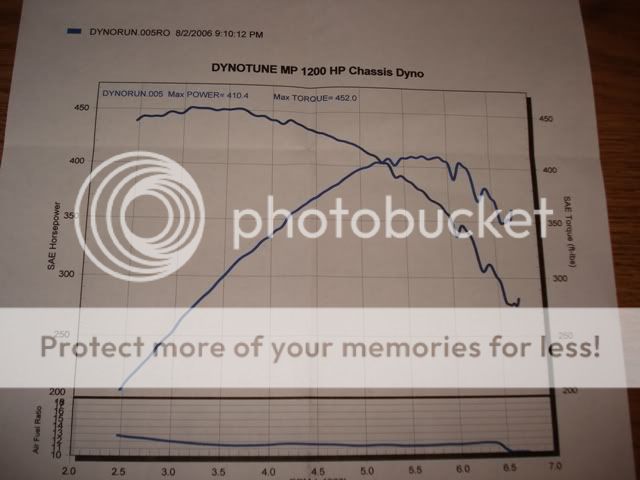Great discussion! But for what it’s worth, maximum cylinder pressures occur at peak torque – not at peak power. (MEP = 4πTQ/Vd). From the dynograph, peak torque looks to be somewhere between 4.5 and 5 krpm…not at redline.
Also, reducing the AFR doesn’t reduce the air charge temperatures within the cylinders (from the vaporization of the fuel when it is injected) as much as one might think. For example, using Lv = 340 kJ/kg (the latent heat of vaporization for gasoline), richening the AFR from 12:1 to 11:1 would only change the air charge temperature by about –2.6 °K (or °C). Even richening the AFR to 10:1 (from 12:1) would only result in a change in temps by about -5.7 °K. Compared to typical temperatures at the intake ports under full boost at WOT, (which depending on boost pressure, SC isentropic efficiency, intercooler efficiency and ambient temps can easily be in the neighborhood of 400 °K, or more), or compared to the combustion temperatures after the spark, (which are on the order of 2500 °K!), that reduction of a few degrees just isn’t that significant. A richer AFR does help reduce knock (post-ignition), but it is by a different mechanism…not from cooling the intake charge.
Edit: BTW, π = pi = 3.141592.......And MEP = mean-effective pressure, and Vd = displacement



